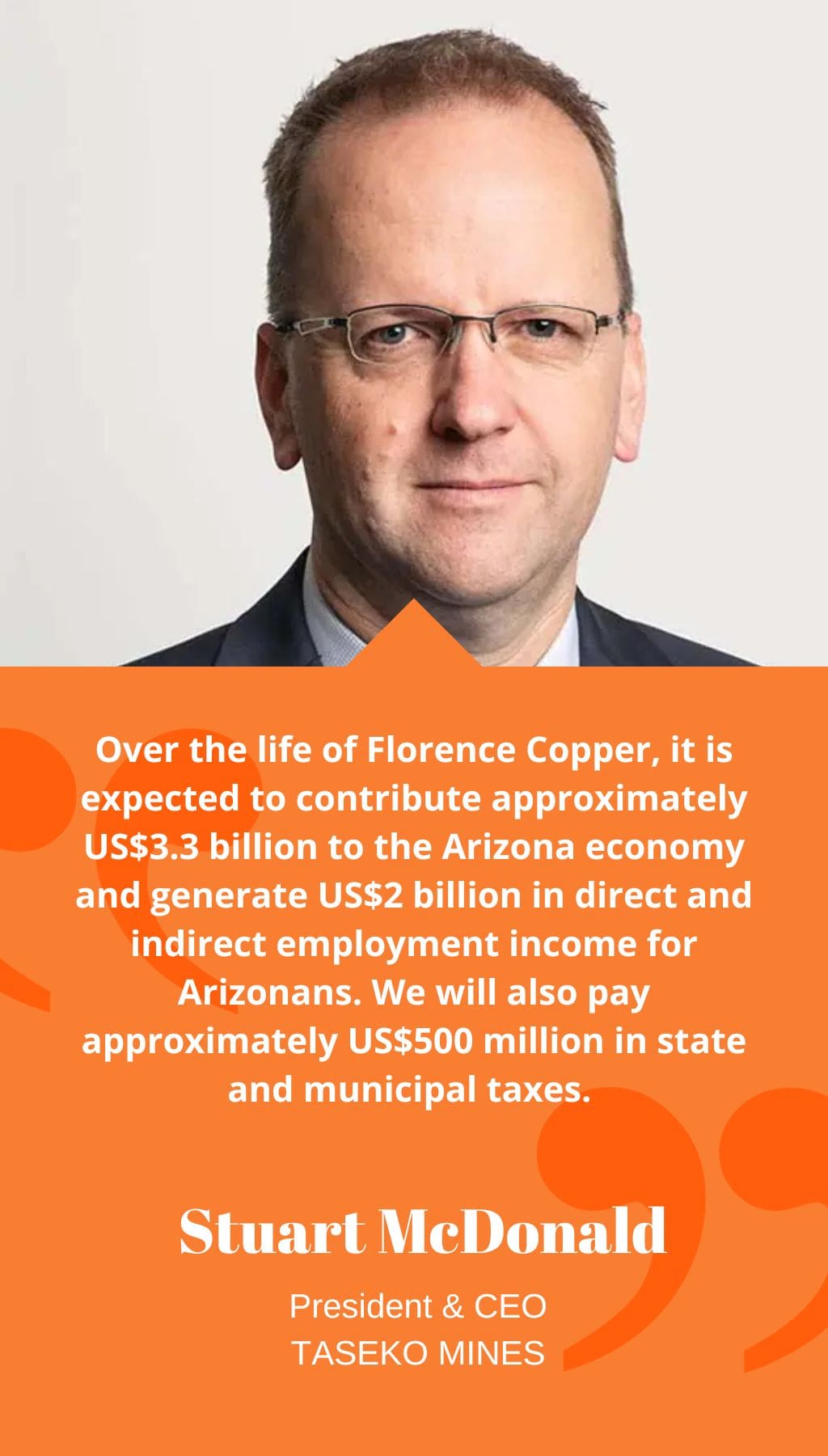
- USA | 31 March 2023

Can you explain the significance of Florence Copper within Taseko’s portfolio?
Taseko’s focus is on becoming a multi-asset copper producer in North America. Currently, the company has one producing operation – the Gibraltar copper mine in British Columbia. However, Taseko has been working on developing a second producing operation, which is Florence Copper. We are in the final stages of permitting and are looking forward to commencing construction within the next few months. Florence Copper is a critical project in the development of our company and has the potential to almost double our copper production and double our cash flow.
Can you provide more information about the recent milestones achieved at Florence Copper, such as the construction of a production test facility (PTF)?
Taseko Mines acquired the Florence Copper project in 2014, and one of the significant steps to mitigate risks was building a production test facility (PTF) in 2018. The main purpose of the PTF was to prove that we could produce copper profitably using the in-situ copper recovery process and also demonstrate to the regulators that we could safely operate that mining method while complying with environmental regulations. The PTF was successful in proving the feasibility and safety of the technology.
To move from the test facility phase to a commercial-scale operation, we needed to amend two permits. The first permit was received in December 2020 from the State of Arizona, and we are currently waiting to receive the final permit from the EPA, which we expect to have within the next few months. Meanwhile, we have started procuring key equipment and have committed approximately US$60 million to secure these. As soon as we have the final permit, we will be able to move smoothly into construction. We expect an 18-month construction period and to be in commercial production by 2024.
Can you explain how in-situ copper recovery technology differs from conventional mining?
In-situ copper recovery technology is different from conventional mining as we do not dig a hole in the ground or tunnel into the ore body. Instead, we drill wells into the ore body and inject a diluted sulfuric acid solution into it. At Florence Copper, we have a unique situation where the ore has already been fractured, allowing our mining solutions to travel through the ore body and recover copper in a solution. This copper-bearing solution is then pumped to the surface through recovery wells, where it is processed. With this technology, we can produce pure refined copper on-site, ready to be shipped to the US domestic market without any further processing.
In-situ copper recovery eliminates the need for haul trucks, a mill facility, and a tailings pond as there is no waste rock, and there is minimal surface disturbance as we only have a wellfield. The total physical footprint of Florence Copper will be 212 acres. In terms of water usage, we use six times less fresh water than conventional open-pit mining. In terms of energy, we use 71% less than a conventional mine while emitting 83% less carbon into the atmosphere.
Can you provide details on the socioeconomic impact of Florence Copper?
Over the life of Florence Copper, it is expected to contribute approximately US$3.3 billion to the Arizona economy and generate US$2 billion in direct and indirect employment income for Arizonans. We will also pay approximately US$500 million in state and municipal taxes. When we reach full capacity, we will create around 500 jobs in the county and 250 on-site jobs.














